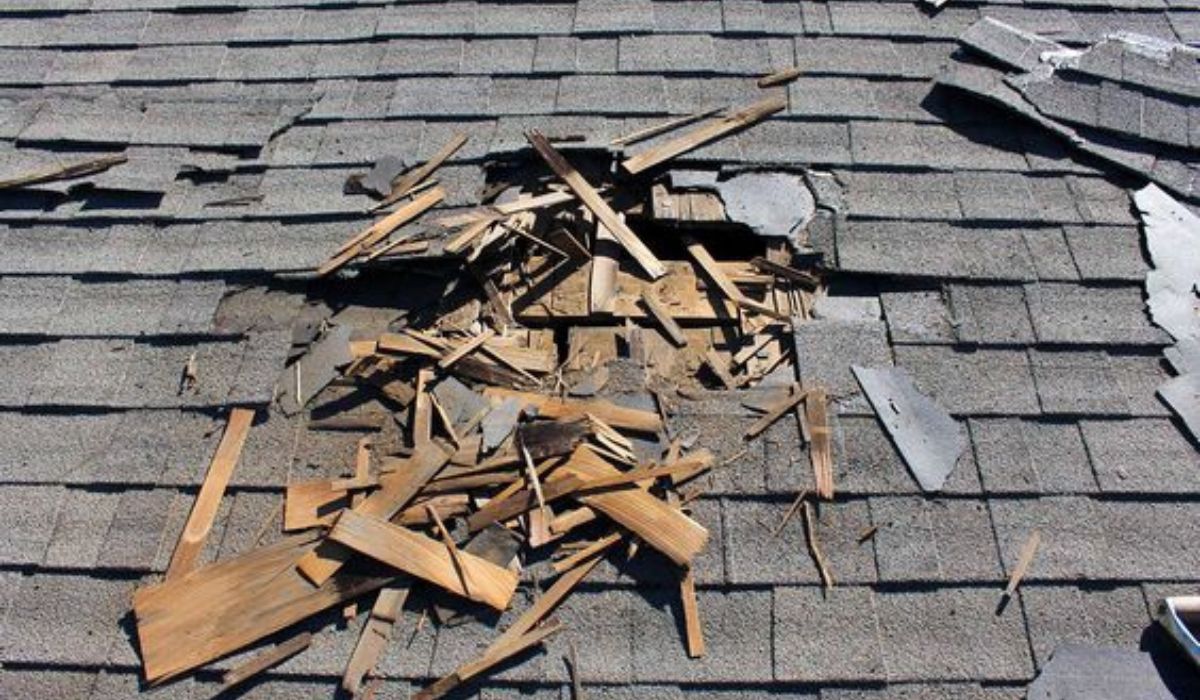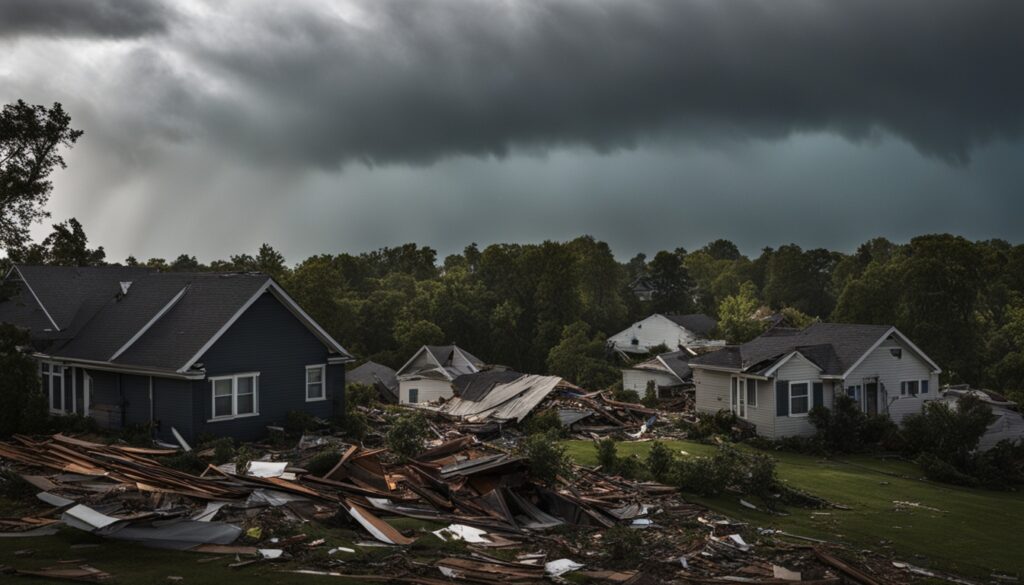
Do insurance policies cover all types of roof damage? What roof damage does insurance actually cover? These may have been questions you asked yourself as a homeowner. It’s important to know what your insurance will pay for. This helps protect your home and your wallet.
Some roof damage is covered by insurance. It’s key to spot signs of damage early. This helps increase your chances of getting help from insurance. By acting fast, you might avoid costly repairs.
Key Takeaways:
- Insurance coverage for roof damage varies depending on the cause and type of damage.
- Typically, homeowners insurance covers storm damage, fire and smoke damage, vandalism, falling objects, burst pipes, accidental water damage, and damage caused by the weight of snow and ice.
- Normal wear and tear, neglect, flood damage, earthquake damage, and cosmetic damage are often not covered by insurance policies.
- Reading and understanding your policy, and consulting with your insurance provider, is crucial to knowing the specifics of your coverage.
- Identifying early signs of roof damage can help you maximize your insurance coverage and avoid further damage to your roof.
Signs of Roof Damage
Finding roof damage early is key to stopping more damage and getting more from your insurance. If you know what to look for, you can act fast to keep your home safe and avoid big repairs. Here are some signs to watch for:
Missing or Damaged Shingles
If shingles are missing or broken, your roof is likely damaged. Winds, hail, and heavy rain can make shingles come off or crack. Check your roof often for any gaps or loose shingles.
Water Stains on Ceilings or Walls
Seeing water stains inside means your roof might be leaking. These leaks can happen from damaged flashing, old shingles, or bad sealant. Fix these leaks soon to avoid more roof and interior damage.
Sagging Roof Deck
A roof that sags can show there’s damage or too much moisture in the attic. This can come from snow piling up or not enough ventilation. Fixing this quickly is important to stop roof problems from getting worse.
Granule Loss
Lost granules on asphalt shingles can lead to UV damage and leaks. If you see lots of granules in your gutters, your shingles might be wearing out. They could need fixing or replacing.
Mold or Moss Growth
Mold, moss, or algae growth can mean your roof is too damp. These can weaken your roof and should be dealt with right away. Doing so stops more harm.
Hail Damage
Hail can dent or break shingles, causing leaks and damage. After a hailstorm, check for signs like dents in your shingles or soft spots.
Finding these early roof issues lets homeowners protect their houses and get more from their insurance. Regular checks and maintenance keep your roof safe for longer.
Types of Roof Damage Covered by Insurance
Homeowners insurance covers many types of roof damage from certain events. Knowing what is covered is key for peace of mind. Here are common damages covered by insurance:
Storm Damage
Insurance typically pays for roof damages from storms, hurricanes, and high winds. This includes shingle damage, structural issues, and leaks. If a storm damages your roof, your insurance will help with repairs or replacement.
Fire and Smoke Damage
Roof damage from fire or smoke is usually covered. Your insurance can assist with repair or replacement costs. Remember to document the damage and file your claim quickly.
Vandalism
If vandals damage your roof, like breaking shingles, your insurance might cover it. This includes repairs or a full roof replacement.
Falling Objects
Insurance often pays for roof damage from falling tree limbs or debris. It includes storm and non-storm situations. Your policy helps with the repair or replacement costs.
Burst Pipes and Accidental Water Damage
Roof damage from burst pipes or water leaks can be included in your coverage. This policy helps with repairing the roof and fixing leaks.
Weight of Snow and Ice
Snow and ice can cause roof damage and leaks. Homeowners insurance covers such damage. If your roof is damaged by snow or ice, your policy will help with repair costs.
It’s vital for homeowners to know what roof damages are covered by insurance. They can manage the claims process better and ensure they get the right coverage for roof repairs or replacements.

Limitations of Roof Damage Insurance Coverage
Homeowners insurance is great for protecting your roof. But, there are things it won’t cover. For example, insurance won’t pay if your roof gets old and just wears out. This counts as normal wear and tear.
Also, if you don’t take care of your roof, insurance might say no. So, keeping it well-maintained is key.
In terms of natural disasters, floods and earthquakes have their own rules. You usually need extra insurance for these. If your roof just looks bad, but still works fine, that’s not something insurance might pay for.

Conclusion
It’s vital for homeowners to understand their roof damage insurance. This knowledge can help them avoid unexpected costs for repairs and replacements. By learning about early roof damage signs and their policy’s coverage, homeowners get better at handling claims.
Most insurance plans cover various types of roof damage. This includes storms, fires, vandalism, and more. But, it’s key to remember that not all damage is covered. There are some limits and exceptions to these policies.
Homeowners need to carefully read their policies and talk to their insurance companies. Getting help from professionals when making claims is also important. This preparation helps protect their homes and money when roof damage happens.
Recommended

Meet William Adams, a seasoned roofing expert with over 30 years of hands-on experience in the industry. Having worked tirelessly under the scorching sun and through the fiercest storms, William brings a wealth of knowledge and expertise to the table. Hailing from the heart of the USA, he’s witnessed the evolution of roofing practices firsthand, mastering every aspect along the way. Now retired from the field, William spends his days cherishing time with his loved ones while sharing his invaluable insights through this platform. With William at the helm, you can trust that every tip, advice, and recommendation provided is backed by years of real-world experience and unwavering dedication to quality craftsmanship. Join us as we journey through the world of roofing, guided by the wisdom and passion of a true industry veteran.
